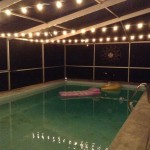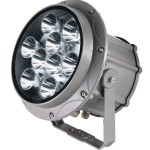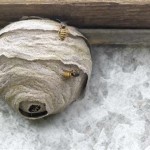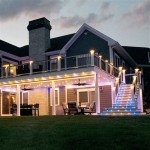Outdoor Lighting Calculation Formula: A Comprehensive Guide
Proper outdoor lighting design requires careful planning and precise calculations to ensure safety, security, and aesthetic appeal. Understanding the fundamental formulas used in outdoor lighting calculations helps achieve optimal illumination levels while minimizing energy consumption and light pollution.
Key Lighting Metrics
Several key metrics are crucial for outdoor lighting calculations:
1.
Luminous Flux (Lumens):
This measures the total amount of light emitted by a source in all directions. It's a key indicator of a light source's brightness.2.
Illuminance (Lux or Footcandles):
This measures the amount of light falling on a surface. One lux equals one lumen per square meter, while one footcandle equals one lumen per square foot.3.
Luminance (Candela per Square Meter or Footlambert):
This measures the perceived brightness of a surface reflecting light. It considers both the amount of light hitting the surface and the amount of light reflected back to the observer.4.
Luminous Intensity (Candela):
This measures the light emitted in a specific direction. It's essential for understanding how light spreads from a source.The Inverse Square Law
The inverse square law dictates that the illuminance on a surface decreases proportionally to the square of the distance from the light source. Mathematically, this is expressed as:
``` E = I / d² ```
Where:
E = Illuminance (lux or footcandles)
I = Luminous Intensity (candela)
d = Distance from the source (meters or feet)
Point Source Calculation
The point source calculation method assumes the light source is a single point emitting light uniformly in all directions. This simplification is useful for initial calculations and for sources like streetlights or spotlights.
Calculating Uniformity
Uniformity is a vital aspect of outdoor lighting design, ensuring consistent illumination across a designated area. It's calculated as:
``` Uniformity = Minimum Illuminance / Average Illuminance ```
A higher uniformity ratio indicates more even lighting distribution.
Spacing and Mounting Height Considerations
The spacing between light fixtures and their mounting height directly impact illuminance and uniformity. Larger spacing requires higher-intensity lights or increased mounting height to maintain adequate illumination levels.
The Lumen Method
The lumen method considers the total lumens emitted by a light source and the area to be illuminated. This method is particularly useful for indoor spaces but can also be adapted for outdoor applications like parking lots or sports fields.
The basic formula is:
``` Average Illuminance = Total Lumens / Area ```
This method requires accounting for factors like reflectance of surfaces and light loss factor (LLF), which considers depreciation of lamps and dirt accumulation.
Utilizing Lighting Software
Complex outdoor lighting projects often benefit from specialized lighting design software. These programs can model various scenarios, considering factors like terrain, obstacles, and specific fixture characteristics. They provide detailed illuminance maps and assist in optimizing fixture placement and selection.
Light Loss Factor (LLF)
The LLF accounts for the reduction in light output over time due to several factors:
1.
Lamp Lumen Depreciation (LLD):
Light output decreases as lamps age.2.
Luminaire Dirt Depreciation (LDD):
Dust and dirt accumulation on the fixture reduce light output.3.
Room Surface Dirt Depreciation (RSDD):
Dirt on room surfaces reduces reflected light (primarily relevant to indoor applications).Outdoor Lighting Standards
Various standards and guidelines govern outdoor lighting design, ensuring safety and minimizing environmental impact. These standards often specify minimum illuminance levels for different applications and provide recommendations for light fixture selection and placement.
Importance of Professional Consultation
While understanding the basic formulas is helpful, complex outdoor lighting projects often benefit from professional consultation. Lighting engineers and designers possess the expertise to navigate complex calculations, optimize lighting layouts, and ensure compliance with relevant standards.
Types of Outdoor Lighting Fixtures
Different outdoor lighting applications demand specific fixture types:
1.
Streetlights:
Provide general illumination for roadways and walkways.2.
Floodlights:
Illuminate large areas, often used for security lighting or sports fields.3.
Spotlights:
Highlight specific features or objects.4.
Landscape Lighting:
Enhances the aesthetic appeal of outdoor spaces.Choosing the Right Light Source
The choice of light source impacts both the quality and efficiency of outdoor lighting. Common options include:
1.
LEDs:
Energy-efficient and long-lasting, LEDs are becoming increasingly popular for outdoor lighting.2.
High-Intensity Discharge (HID):
Offer high light output but are less energy-efficient than LEDs.3.
Metal Halide:
A type of HID lamp that provides good color rendering.4.
High-Pressure Sodium:
Highly efficient but with poorer color rendering.Area Lighting Design Calculations Part One Electrical Knowhow
Area Lighting Design Calculations Part One Electrical Knowhow
Area Lighting Design Calculations Part One Electrical Knowhow

Voltage Drop Calculation Example

Voltage Drop Calculation Example
Area Lighting Design Calculations Part One Electrical Knowhow

Landscape Lighting Calculator Home

Light Bulb Beam Spread Chart Calculate The Of
Area Lighting Design Calculations Part One Electrical Knowhow
Area Lighting Design Calculations Part One Electrical Knowhow
Related Posts







